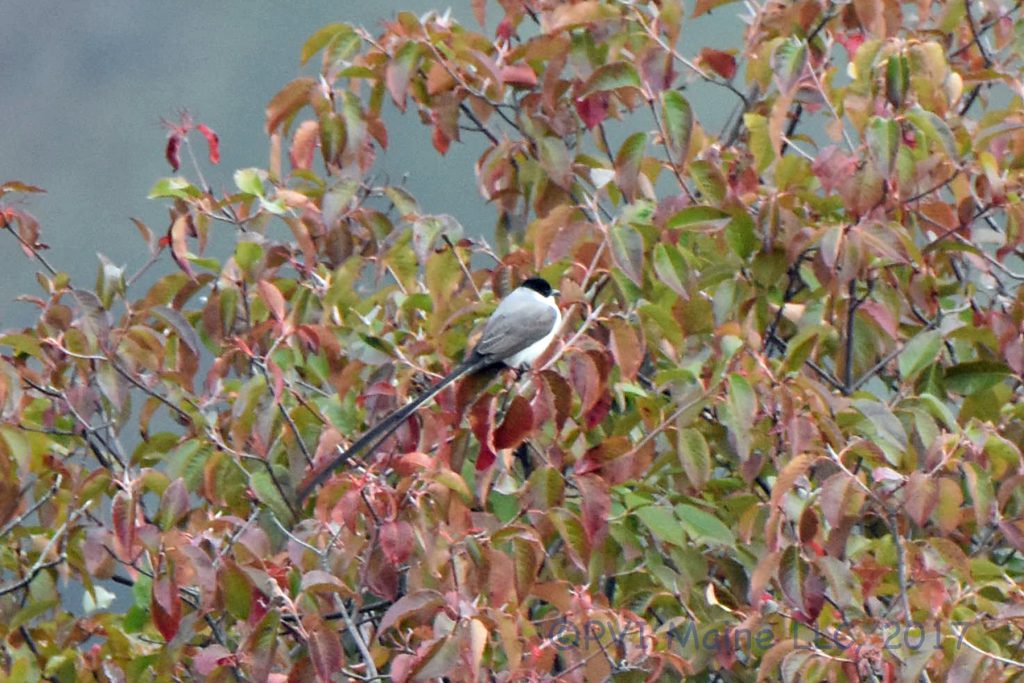The Fork-tailed Flycatcher is a bird species found in North, Central, and South America. It measures around 8.7 inches in length and weighs approximately 1.2 ounces. The bird’s most distinguishing feature is its long, deeply forked tail that is black in color. The Fork-tailed Flycatcher has a white belly and throat and a glossy blue-black head, back, and wings. Males have a striking salmon-pink or red-orange throat, while females have a more subdued grayish-brown throat.

The Fork-tailed Flycatcher is known for its long migration, traveling from its breeding grounds in South America to its wintering grounds as far north as the southern United States. The bird breeds in open areas such as savannas, grasslands, and pastures, and it feeds primarily on insects, which it catches in mid-air. During migration, the Fork-tailed Flycatcher can often be seen perching on wires or in open fields, where it waits to catch passing insects.
In North America, the Fork-tailed Flycatcher is a rare visitor, primarily found in the southern parts of Texas and Arizona during the spring and fall migration seasons. In the United States, the bird is often seen in areas with open fields, such as agricultural land and golf courses. Birdwatchers and enthusiasts often keep a keen eye out for this species during migration as it is a rare sight.
The Fork-tailed Flycatcher is a social bird and is often seen in groups, particularly during migration. It is known for its aerial acrobatics, which it uses to catch insects in mid-air. The bird has a distinctive call, which is a sharp “twee-twee-twee” sound. The bird’s social behavior and striking appearance make it a popular subject for birdwatchers and nature photographers.

Although the Fork-tailed Flycatcher is not considered a threatened species, habitat loss and degradation can affect its breeding and wintering grounds. Conservation efforts to protect the bird’s natural habitat and migratory routes are important in ensuring the continued survival of this species.


